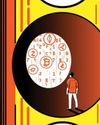As India’s digital landscape evolves, simple mobile point-of-sale machines have morphed into full-fledged payment platforms with value-added services

Recently, after buying books for his grandchildren from a shop in Shimla, President Ramnath Kovind tweeted, “Happy to experience the spreading digital payments culture in our country.”
This “culture” got a big boost in November 2016 when Prime Minister Narendra Modi declared 500- and 1000-rupee notes—which made up 86 percent of the cash in circulation at the time—null and void. Upstarts like the now-ubiquitous mobile-wallet company Paytm surged in usage, going from 115 million registered users at the time of the announcement to 160 million in just 60 days.
Besides mobile wallets that dominated the market immediately after the demonetisation, the usage of Unified Payments Interface (UPI), which enable instant transfer of money from one bank account to another on a mobile platform, has also been on the rise since November 2017. According to the Reserve Bank of India (RBI), 171.4 million UPI-based transactions, totalling ₹19,120 crore, were recorded in February 2018, eclipsing the 113.1 million transactions worth ₹3,650 crore clocked by prepaid instruments, including mobile wallets.
But despite the surge of mobile wallets and UPI, debit and credit card transactions still form the bulk of digital payments. RBI’s data shows that 247.1 million transactions worth ₹46,590 crore were carried out through debit and credit cards in February 2018, making up 22.5 percent of all digital transactions by volume.
この記事は Forbes India の June 22, 2018 版に掲載されています。
7 日間の Magzter GOLD 無料トライアルを開始して、何千もの厳選されたプレミアム ストーリー、9,000 以上の雑誌や新聞にアクセスしてください。
すでに購読者です ? サインイン
この記事は Forbes India の June 22, 2018 版に掲載されています。
7 日間の Magzter GOLD 無料トライアルを開始して、何千もの厳選されたプレミアム ストーリー、9,000 以上の雑誌や新聞にアクセスしてください。
すでに購読者です? サインイン

Home-Cooked Meal Is Now Greatly Valued
The pandemic has also brought with it an improved focus on hygiene, use of technology in dining, rise of cloud kitchens and resurgence in popularity of Indian ingredients

Paytm 3.0 - Reaching Near Breakeven In Two Years
As of 2020, Vijay Shekhar Sharma’s super app for financial services had run up losses in thousands of crores. Now, as digital payments gets yet another boost courtesy Covid-19, he’s hopeful of reaching near breakeven in two years

THE PANDEMIC HAS CAUSED WOMEN GREATER LABOUR PAIN
Covid-19 has shown that women are more likely to face the brunt of job losses than men, and find fewer opportunities when they want to resume. That apart, several have to deal with increased hours of unpaid work at home and even domestic abuse

LEADERSHIP WILL BE ABOUT SEEING THE BIGGER PICTURE
Leaders must not only guard their teams first during a crisis, but also deal with stakeholders with respect and dignity. And apart from pursuing business goals, they should remain committed to our planet and the environment

PHILANTHROPY SHOULD BE HUMBLE, BUT NOT MODEST
Apart from building a flexible and resilient framework for the future, philanthropists, civil society and the government must work in tandem so that every rupee is absorbed on the ground

INTEGRATED HEALTH CARE, TECH WILL DISRUPT SECTOR
While clinical research will get a boost, having a skilled workforce and public spending on health care will be challenges in the near term

DIGITALISATION WILL HELP IN VALUE CREATION
As the pandemic brings technology and innovation to the core of business and daily life, the next decade will see about 150 million digital-first families in India

Industry 4.0: Climate Revolution?
Augmenting sustainability alongside digital capabilities is an economic, competitive and global opportunity for India’s businesses, but regulations need to reflect intent

EV Dream Still Miles Away
Electric vehicles have remained a buzzword in India for years. But not much has moved on ground due to high upfront costs, range anxiety and charging infrastructure

Living Waters
A virus has caused us to scramble for oxygen but our chokehold on the environment is slowly strangling the very waters that breathe life into us. The virus is a timely reminder: We are merely consumers, not producers of life’s breath on this planet